Feeling adventurous? Tinolang Palaka is light, refreshing, and full of exciting flavors. It's ready in minutes and the perfect dish for a cold, rainy day!
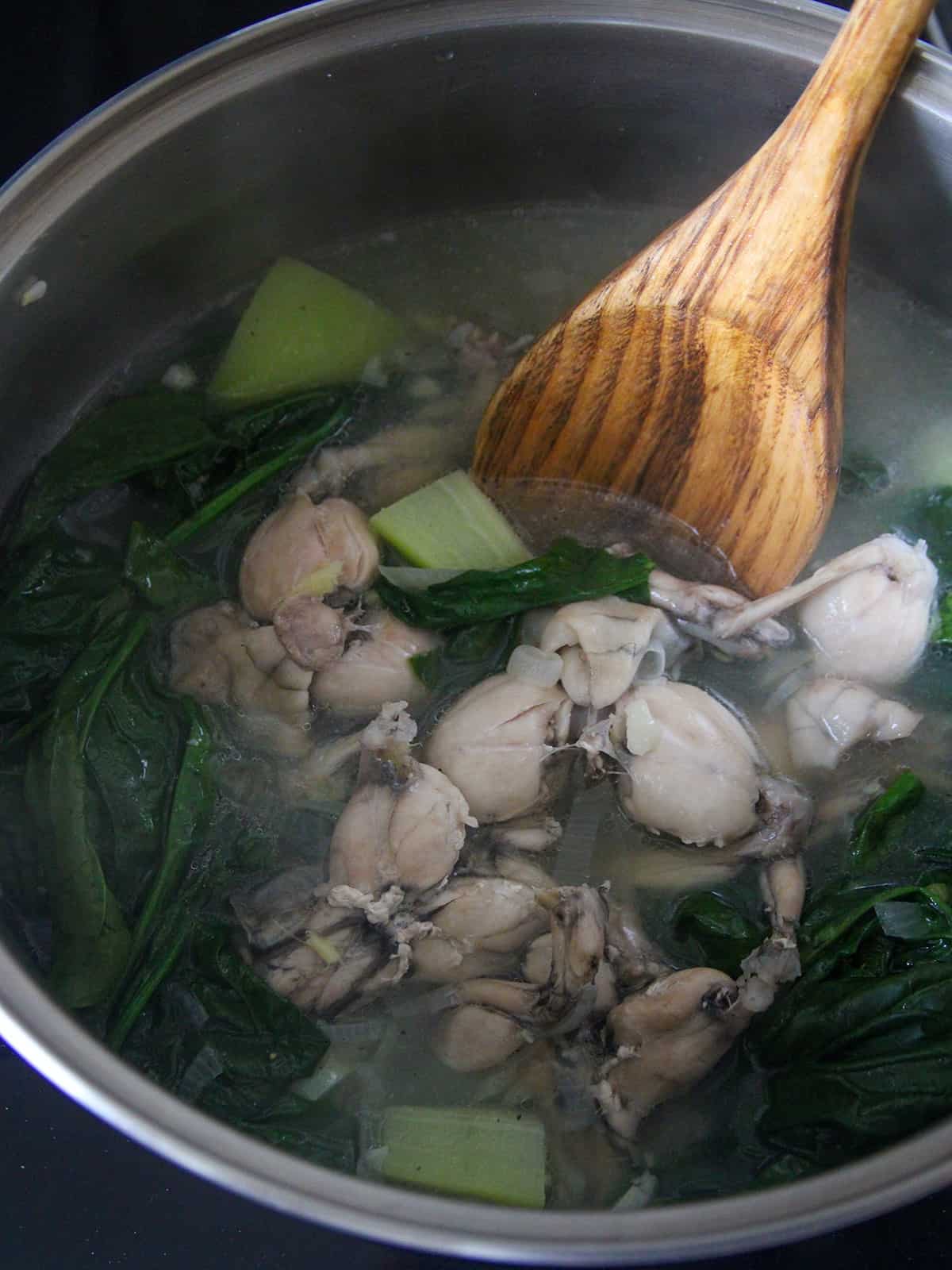
I was in the middle of working on this tinolang palaka recipe when I found myself stumped. What category in my recipe index should I place "frogs"? Meat and Poultry? Fish and Seafood? I called G for assistance, and his answer had me roaring with laughter. "I wouldn't even classify them as food."
Dear readers, before you agree with him, let me prod you from your culinary boundaries and assure you that frog legs taste like chicken. They have a mild flavor and soft texture similar to chicken and are as delicious in dishes like tinolang manok sa upo or chicken adobo.
Ingredients notes
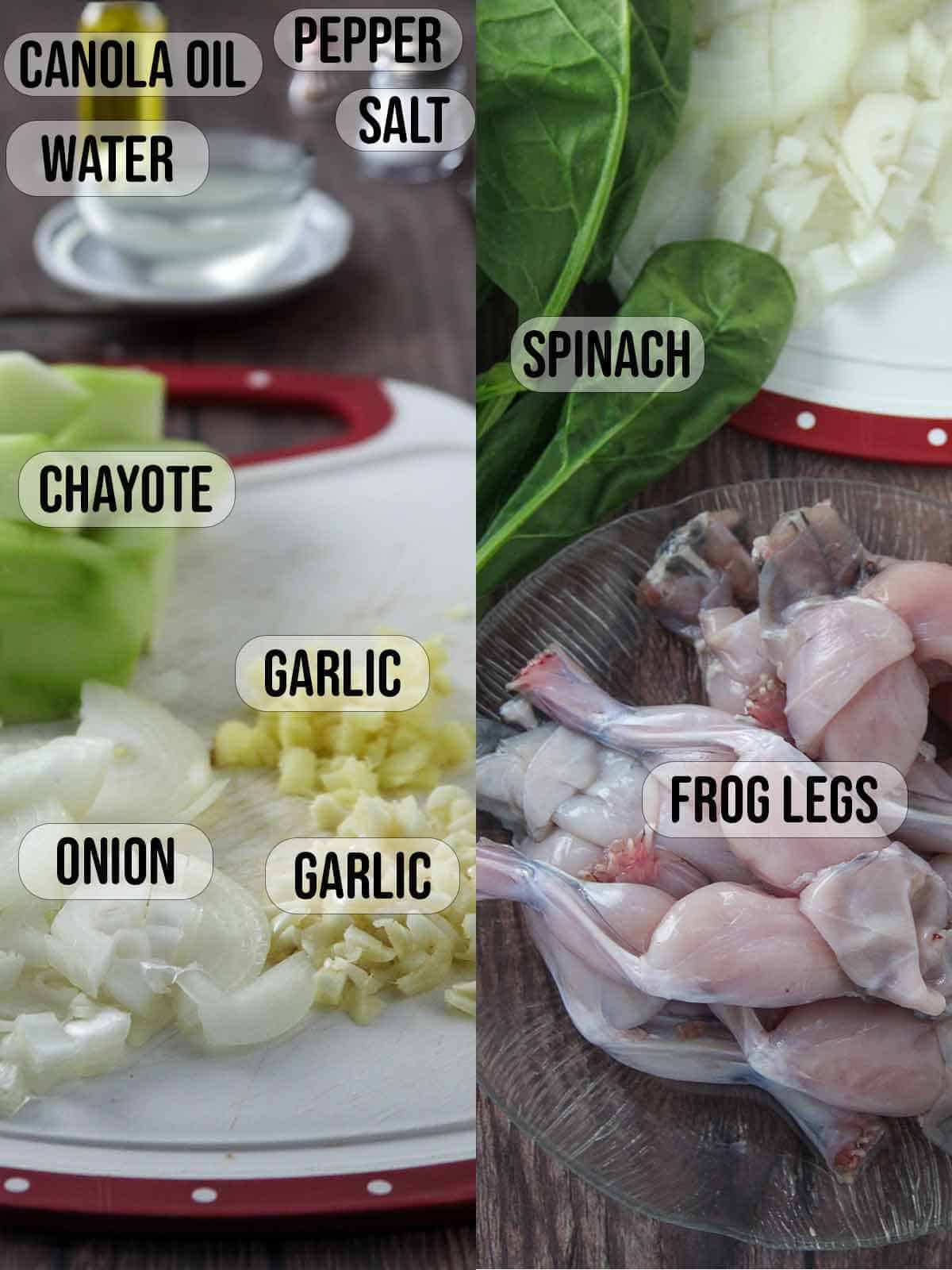
- Palaka- A few types of frogs are edible and good for consumption. In the Philippines, palakang bukid caught in rice fields are usually sold in wet markets. They're usually sold whole and need to be skinned and gutted for cooking. In the U.S., ready-to-cook frozen legs are available in the freezer aisle of most Asian supermarkets.
- Chayote- green, pear-shaped gourd also known as mirliton or choko. You can substitute green papaya or upon.
- Oil- for sauteing
- Fish sauce- for an umami taste
- Onion, ginger, and garlic- aromatics flavor the soup
- Fish sauce- for umami taste.
- Water- or use rice washing for depth of flavor
- Salt and pepper- seasonings
- Spinach- added for its nutritional value. You can also use young leaves from chili peppers, ampalaya, or malunggay.
Tinolang palaka cooking steps
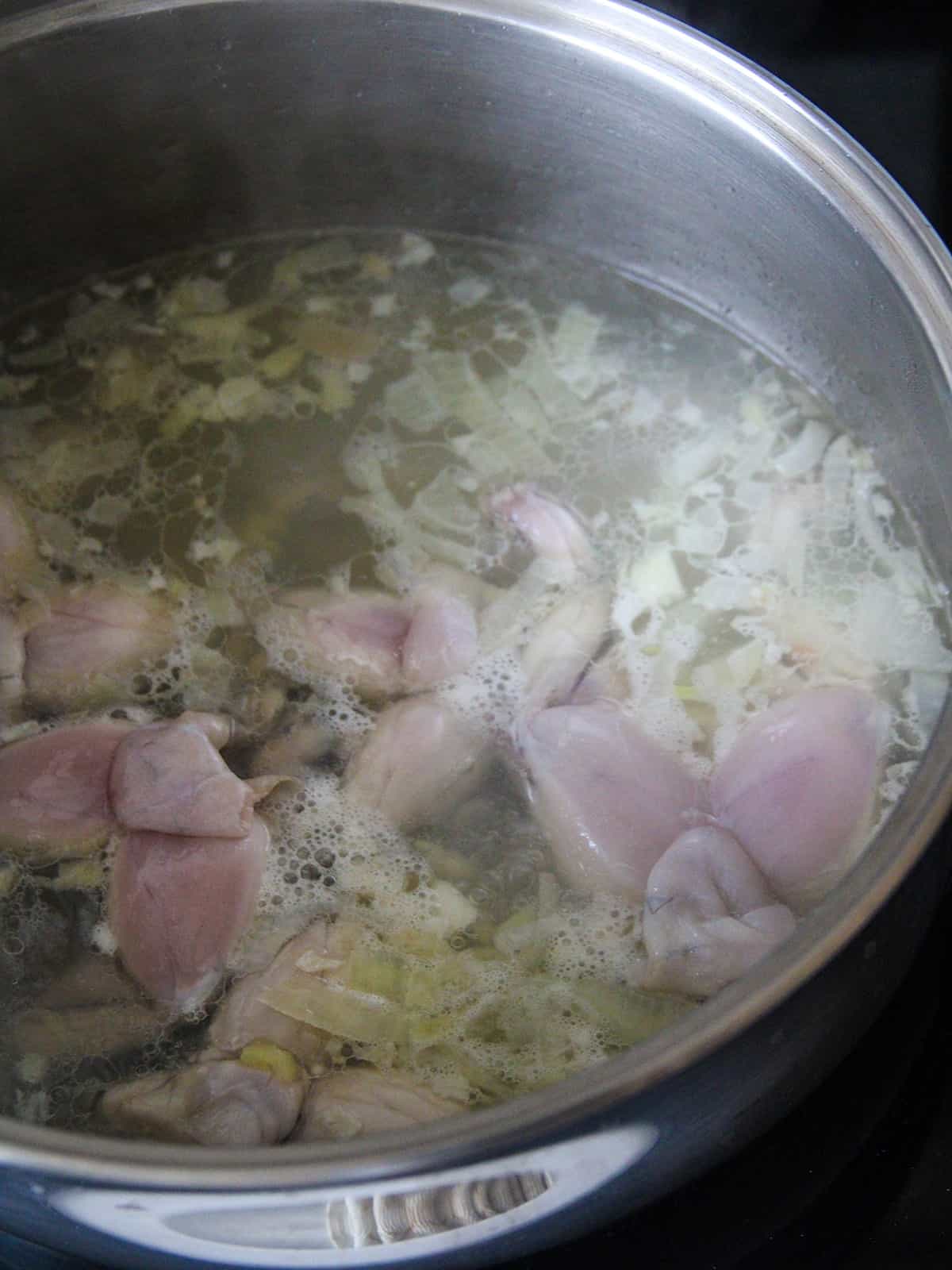
- Heat oil in a deep pot and saute onions, garlic, and ginger until softened and aromatic.
- Add fish and cook for about a minute or two. Add water and bring to a boil.
- Add frog legs. Lower heat, cover, and cook for 8 to 10 minutes or until tender.
- Add chayote and cook for about 3 to 5 minutes or until tender but not falling apart. Adjust flavor with salt and pepper to taste.
- Add spinach, turn off the heat, and cover to allow spinach to cook in the residual heat. Serve hot.
Quick tip
Soak the legs in milk for about 1 hour or salt water overnight before cooking to remove any impurities, and whiten and tenderize the meat. For food safety, keep refrigerated.
Frequently Asked Questions
How much of a frog is edible?
While the entire frog is eaten and used in recipes such as soups in certain countries, the meatiest section and most commonly sold in US stores are legs.
What is the best way to eat frog legs?
Frog legs can be cooked in various ways, such as tinola, ginataan, or adobo. My favorite way to eat them is this garlic butter fried frog legs recipe.
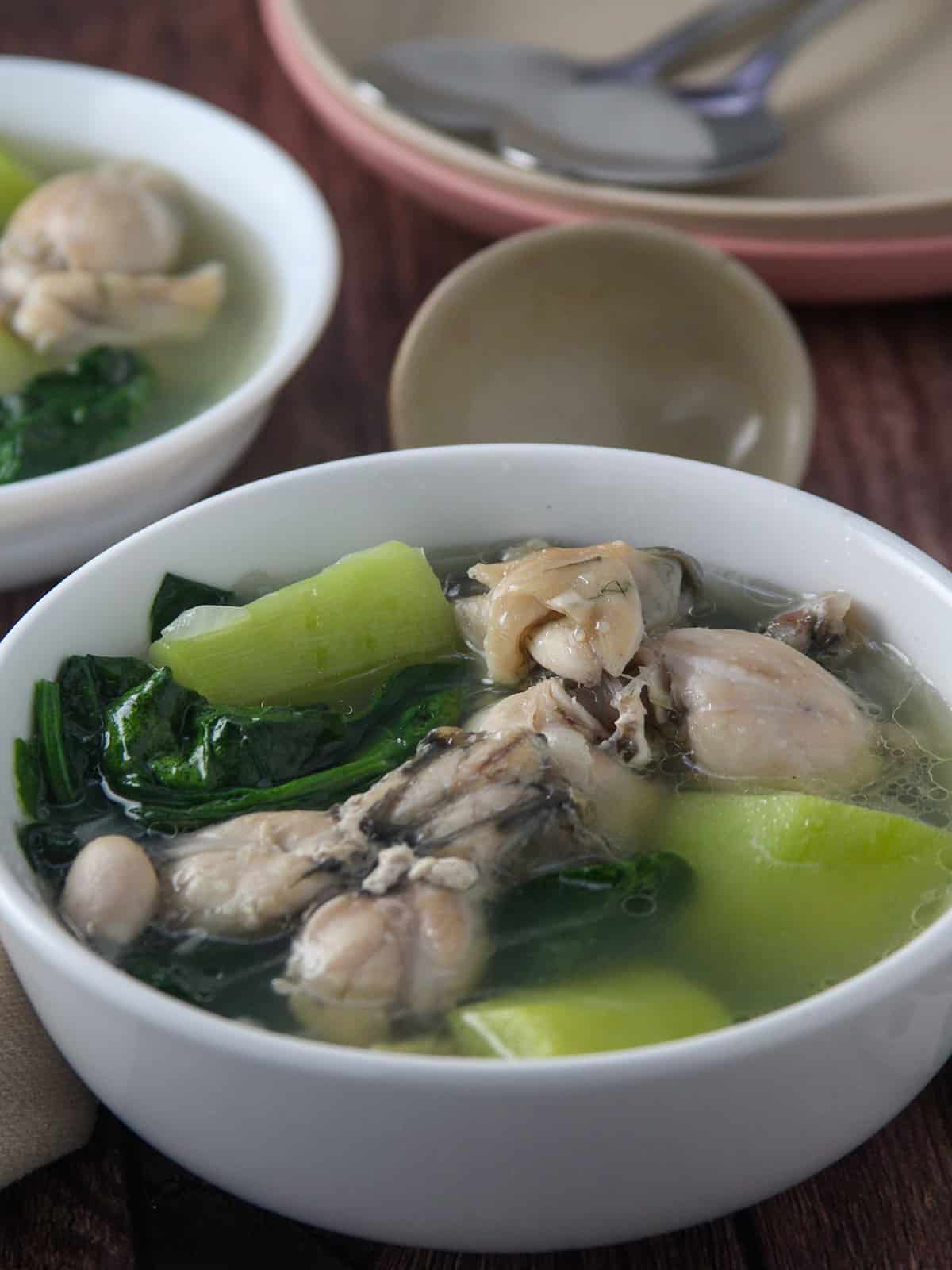
How to serve and store
- Tinolang Palaka is eaten as a side soup or a main entree with steamed rice.
- Store leftovers in a container with a tight-fitting lid and refrigerate for up to 3 days or freeze for up to 2 months.
- Reheat in a saucepan over medium heat to 165 F. Or microwave at 2 to 3-minute intervals, stirring well between intervals.
More soup recipes
Ingredients
- 1 tablespoon canola oil
- 1 onion, peeled and chopped
- 3 cloves garlic, peeled and minced
- 1 thumb-sized ginger, peeled and julienned
- 1 tablespoon fish sauce
- 2 cups water
- 4 frog legs
- ½ bunch spinach
- 1 chayote
- salt and pepper to taste
Instructions
- In a pot over medium heat, heat oil. Add onions, garlic, and ginger and cook, stirring regularly, until softened.
- Add fish sauce and cook for about 1 to 2 minutes.
- Add water and bring to a boil.
- Add frog legs. Lower heat, cover, and cook for about 10 minutes or until frog legs are tender.
- Add chayote and cook for about 3 to 5 minutes or until tender.
- Season with salt and pepper to taste.
- Add spinach, turn off heat, and cover to allow spinach to cook in the residual heat. Serve hot.
Notes
Nutrition Information
“This website provides approximate nutrition information for convenience and as a courtesy only. Nutrition data is gathered primarily from the USDA Food Composition Database, whenever available, or otherwise other online calculators.”

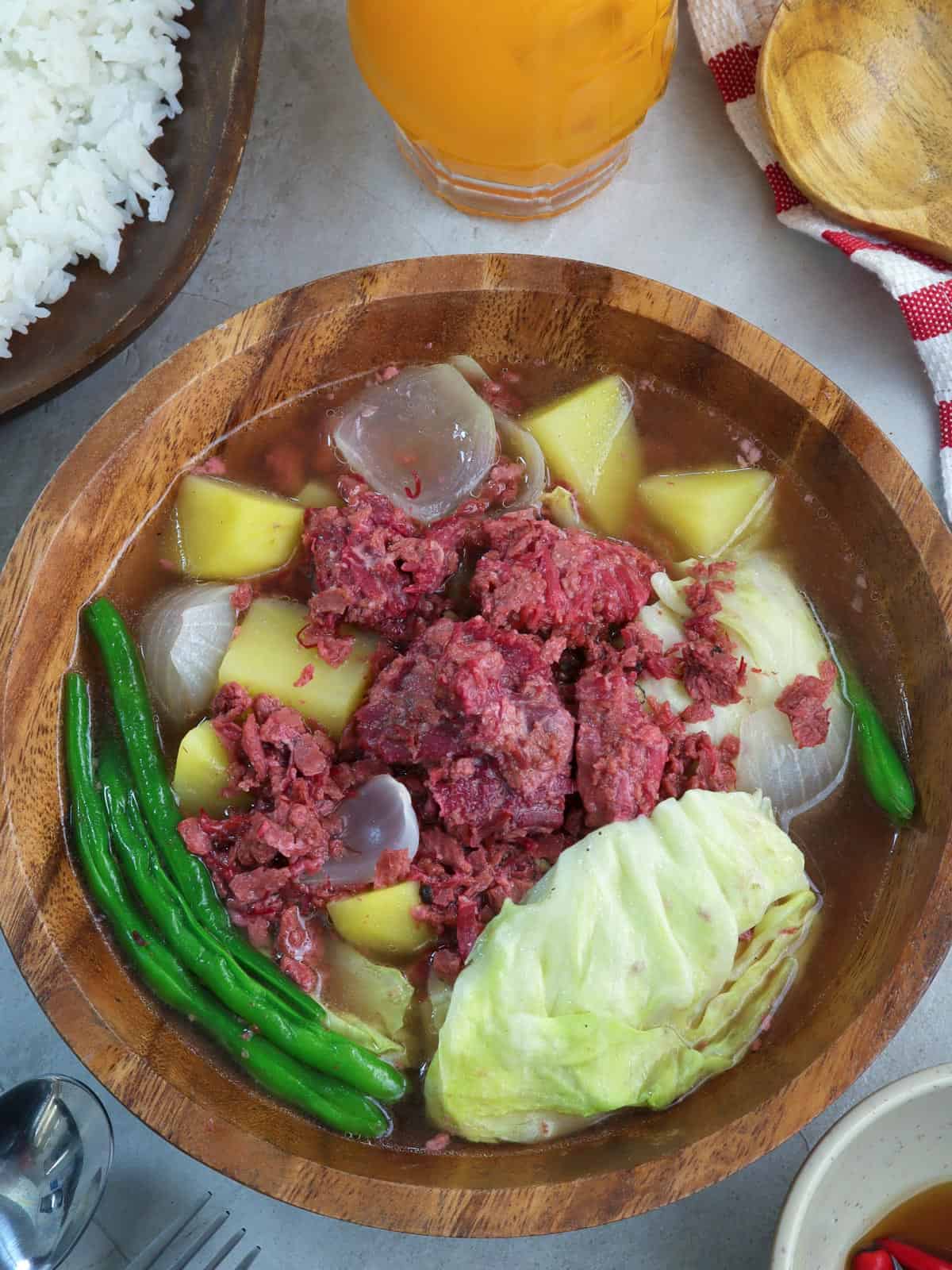
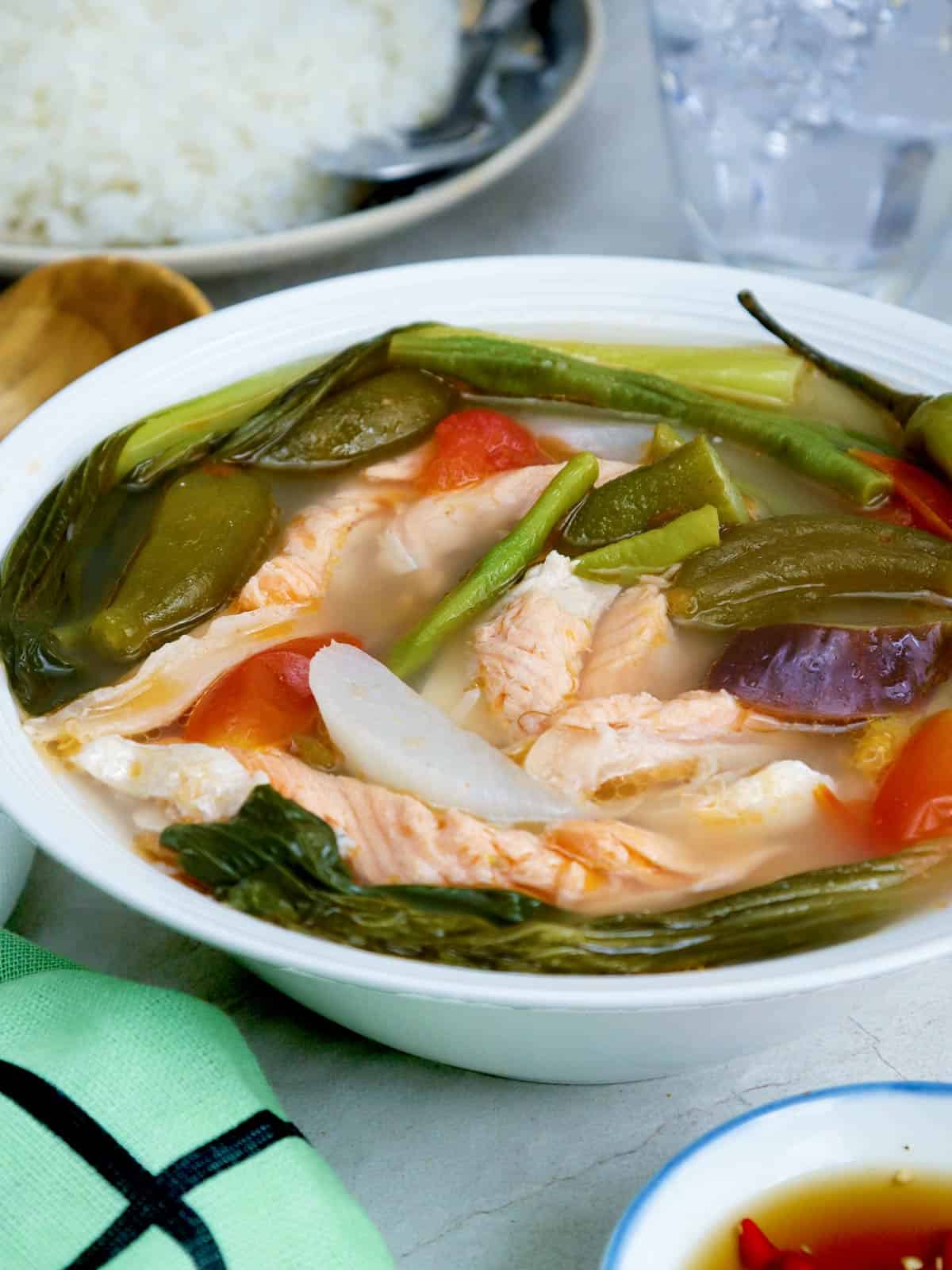
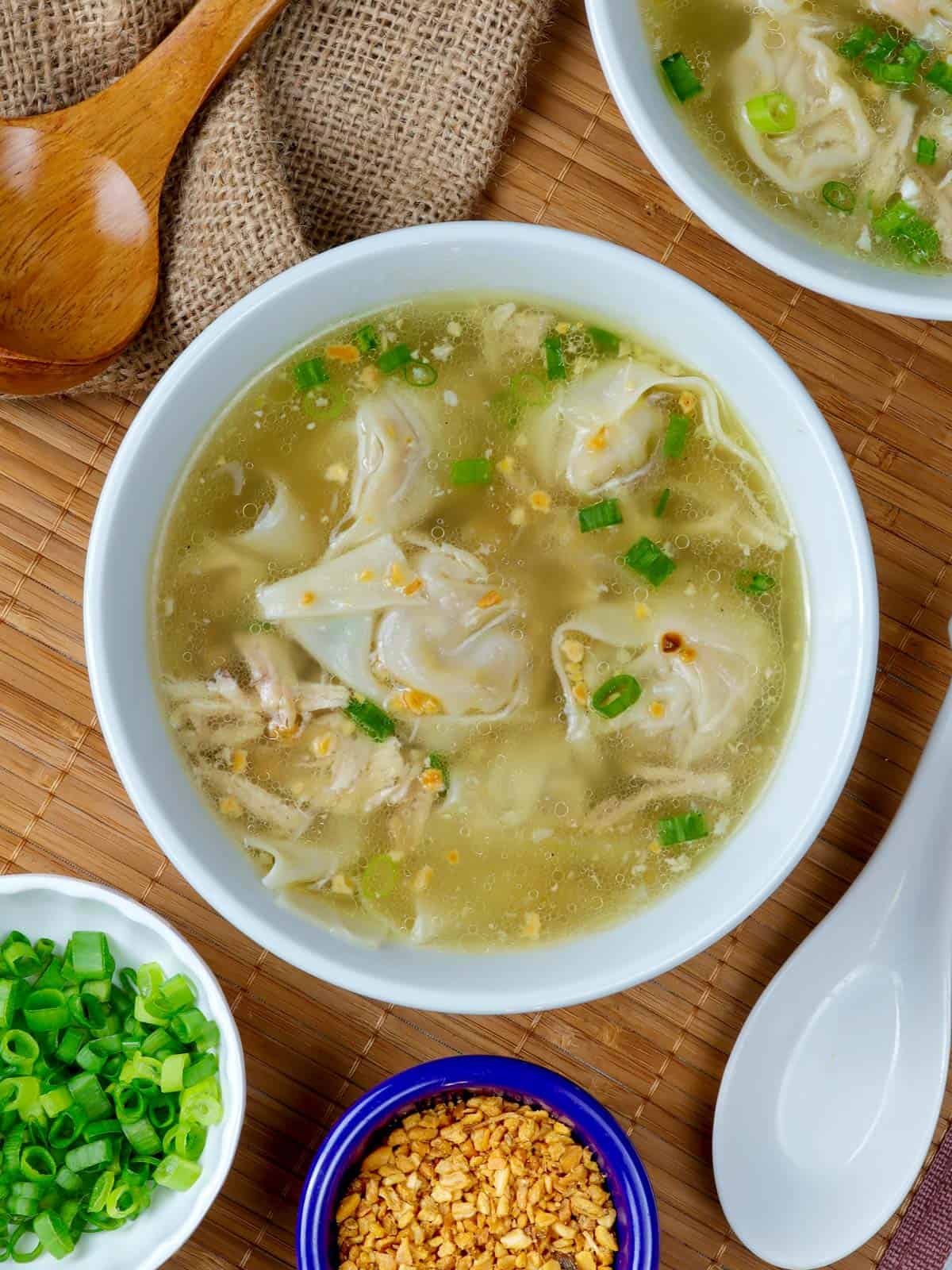
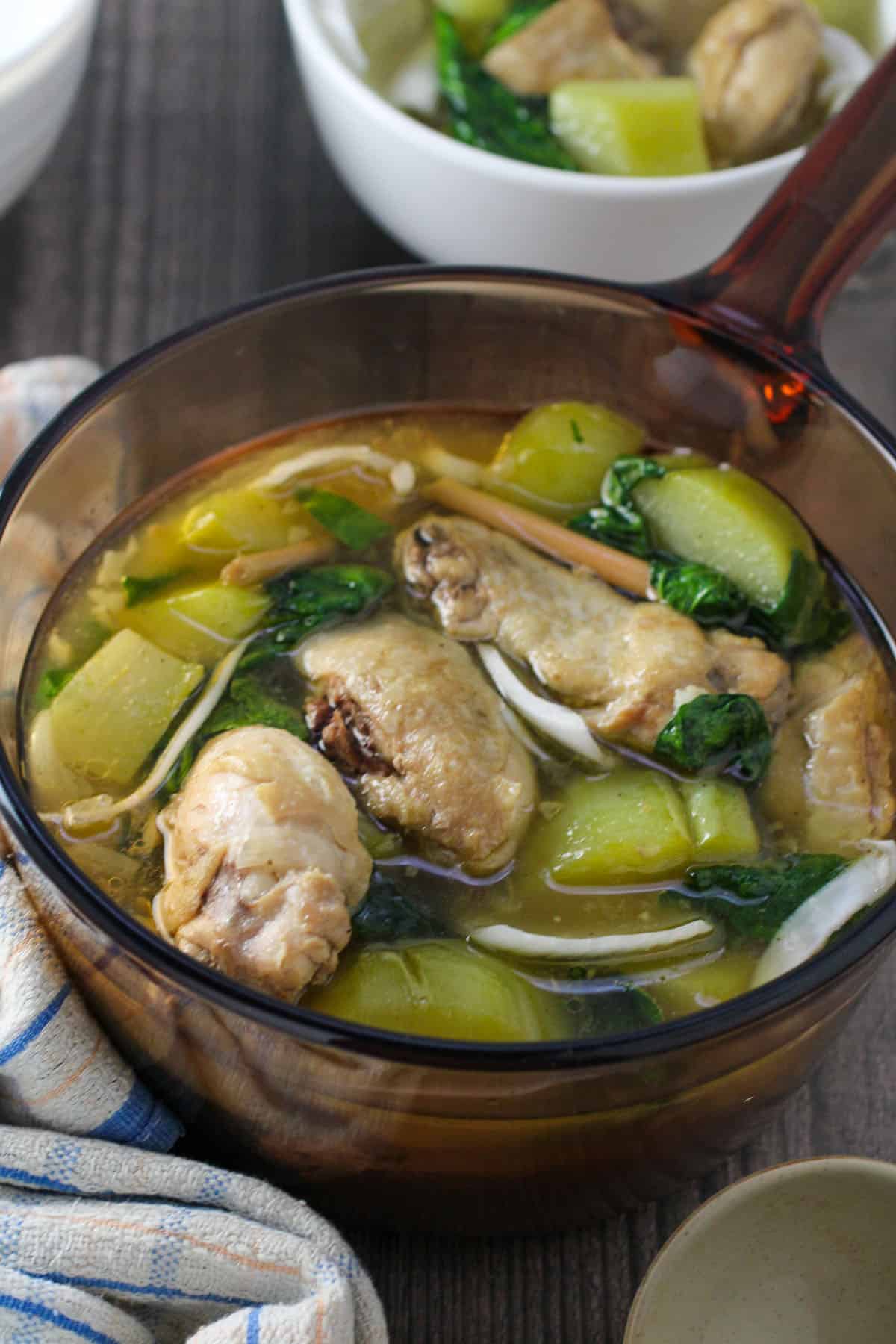
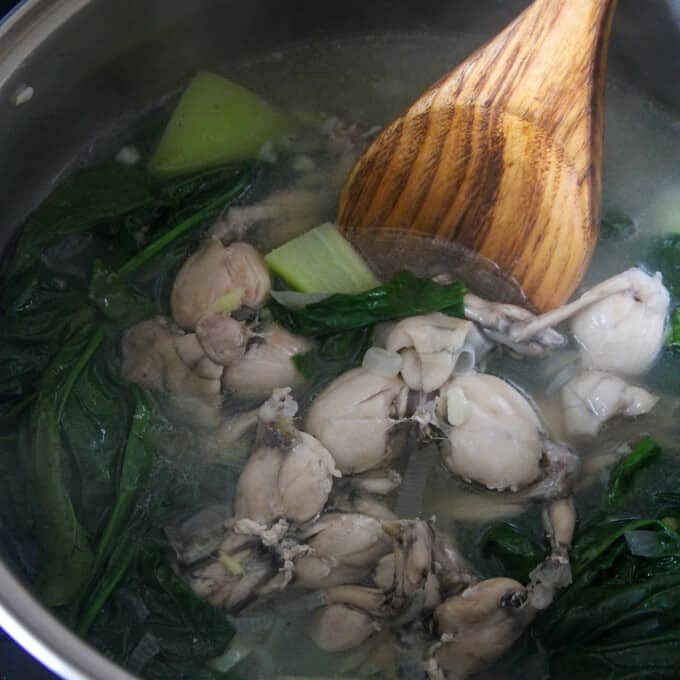
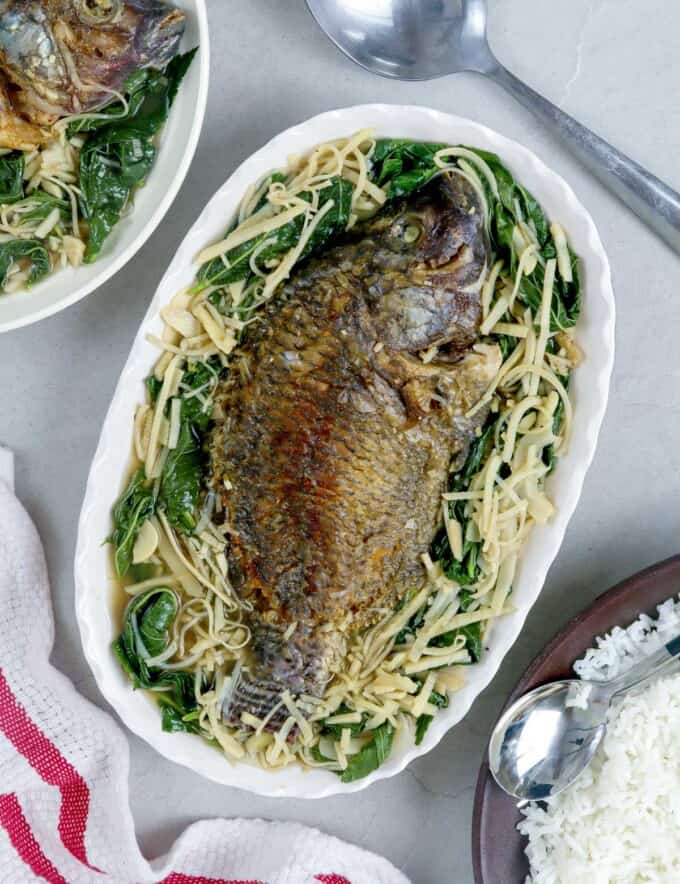
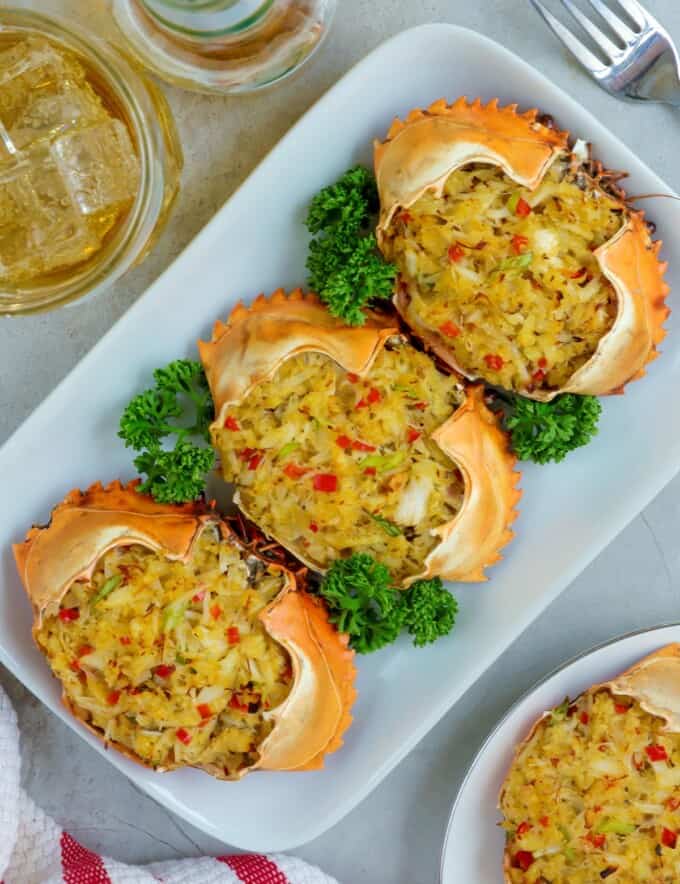
Leave a Comment